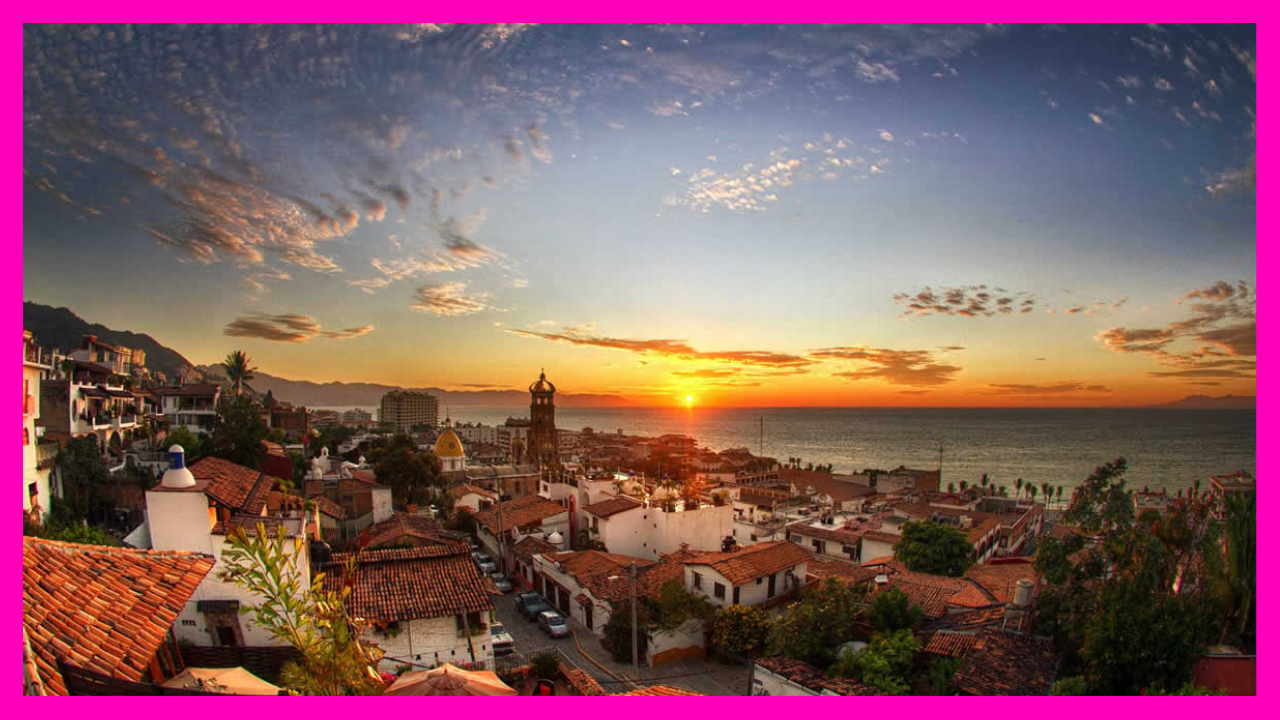PUERTO VALLARTA , MEXICO, TIPS BEFORE YOU GO!
The most common way to get to Puerto Vallarta is by air, arriving at Puerto Vallarta’s Licenciado Gustavo Díaz Ordaz International Airport (airport code PVR). There are also many visitors who arrive on cruise ships, as Puerto Vallarta is a popular port of call for cruises of the Mexican Riviera.
Cruise ships dock at the Marina Vallarta Maritime Terminal, which can accommodate three full-size cruise ships. If coming by land, travelers can get to Puerto Vallarta from Guadalajara by bus in under five hours.
A few airlines fly across the Atlantic directly to Mexico City, where easy Puerto Vallarta connections are available via VivaAerobus, Copa, and Aeroméxico. These include Lufthansa, which connects directly from Frankfurt, and Aeroméxico, which connects directly from Paris and Madrid.
From Latin America, Aeroméxico connects directly with Mexico City, customarily with São Paulo, Brazil; Santiago, Chile; Lima, Peru; Buenos Aires, Argentina; and Bogota, Colombia. They also connect directly with Guatemala City, San Jose in Costa Rica, San Pedro Sula in Honduras, and San Salvador in El Salvador. A number of other Latin American carriers also fly directly to Mexico City.
Very few flights cross the Pacific directly to Mexico, but Japan Airlines connects Tokyo to Mexico City via Los Angeles or Dallas. More commonly, travelers from Australasia transfer at New York, Chicago, Dallas, San Francisco, or Los Angeles for Puerto Vallarta.
CULTURE & CUSTOMS
Spanish is the primary language spoken, but many people – especially those who work in the tourist zone – speak English. It may be both helpful and respectful to know some basic Spanish vocabulary, such as “hello” (hola), “goodbye” (adíos), “please” (por favor) and “thank you” (gracias).
Puerto Vallarta’s official currency is the Mexican peso. Since the Mexican peso to U.S. dollar exchange rate fluctuates, be sure to check what the current exchange rate is before you go. American dollars are, however, widely accepted in Puerto Vallarta.
Entry & Exit Requirements
Citizens of the United States need a passport to visit Mexico. Travelers must also carry a Mexican Tourist Permit, which is usually issued free of charge upon arrival. Any additional fees for the tourist permit are usually absorbed in the cost of your plane ticket. Be sure to hold onto this card throughout your trip, as you will need to present it upon departure. For more information on entry and exit requirements, visit the U.S. State Department’s website.
Stay safe
Emergency Numbers
Emergency, Police/Fire: 060
Fire Dept: 223-9476, 223-9478
Police Dept: 290-0507, 290-0512
Red Cross & Ambulance: 222-1533
Motor Vehicle Dept: 224-8484
Consumer Protection (Profeco): 225-0000
Immigration Office: 221-1380
American Consulate: 222-0069, 223-0074 – After hours: 01-333-268-2145
Canadian Consulate: 293-0098, 223-0074 – After hours: 01-800-706-2900
Hospitals
Ameri-Med: 226-2080
CMG: 223-1919
Cornerstone: 224-9400
I.M.S.S.: 224-3838
Medasist: 223-0444
Regional: 224-4000
San Javier: 226-1010
Visas
NEW TOURIST TAX LAW Mexico has an established tourist exit tax of MX$558 which is normally included in your plane ticket when you depart the country or if departing over land, you pay it at the INM border post. However, a new law has been introduced this year in March whereby entry into Mexico will also require the payment of a tourist tax of MX$558. This entry tax now seems to be at all land border crossings. Just to reiterate, you now pay and entry and exit tax for Mexico.
Visa-free
According to the Mexican Ministry of Foreign Affairs (Secretaria de Relaciones Exteriores), certain foreign nationals who intend to stay in Mexico for fewer than 180 days for the purpose of tourism or business, or 30 days if in transit, may enter Mexico visa-free. This service is available to citizens of all European Union nations, plus Andorra, Argentina, Australia, the Bahamas, Barbados, Belize, Brazil, Canada, Chile, Colombia, Costa Rica, Hong Kong, Iceland, Israel, Jamaica, Japan, Liechtenstein, Macau, the Marshall Islands, Malaysia, Micronesia, Monaco, New Zealand, Norway, Palau, Panama, Paraguay, Peru, San Marino, Singapore, South Korea, Switzerland, Trinidad and Tobago, the United States, Uruguay, Vatican City and Venezuela.
Other visa exempt persons include:
Citizens of any country who hold a valid visa for, or who are permanent residents of, Canada, Japan, the United Kingdom, the United States or the Schengen Area.
Citizens of any country who are permanent residents of Chile, Colombia or Peru.
Residents of French overseas departments and territories, Danish territories, and Dutch Caribbean territories.
Note that for British nationals, only holders of British Citizen, British National (Overseas) and British Subject passports are eligible for visa-free entry.
Visas required
An Electronic authorization visa (Autorización Electrónica) for travelling to Mexico is available on the Internet for nationals from Russia, Turkey and Ukraine, provided that they travel to Mexico by air. Authorisation is valid for 30 days and a single entry. Upon arrival, visitors are authorised to stay in Mexico as tourists for up to 180 days.
Other nationalities must contact a Mexican consulate in order to find out the requirements for citizens of their country, and may have to apply for and obtain a visa in advance of travel.

